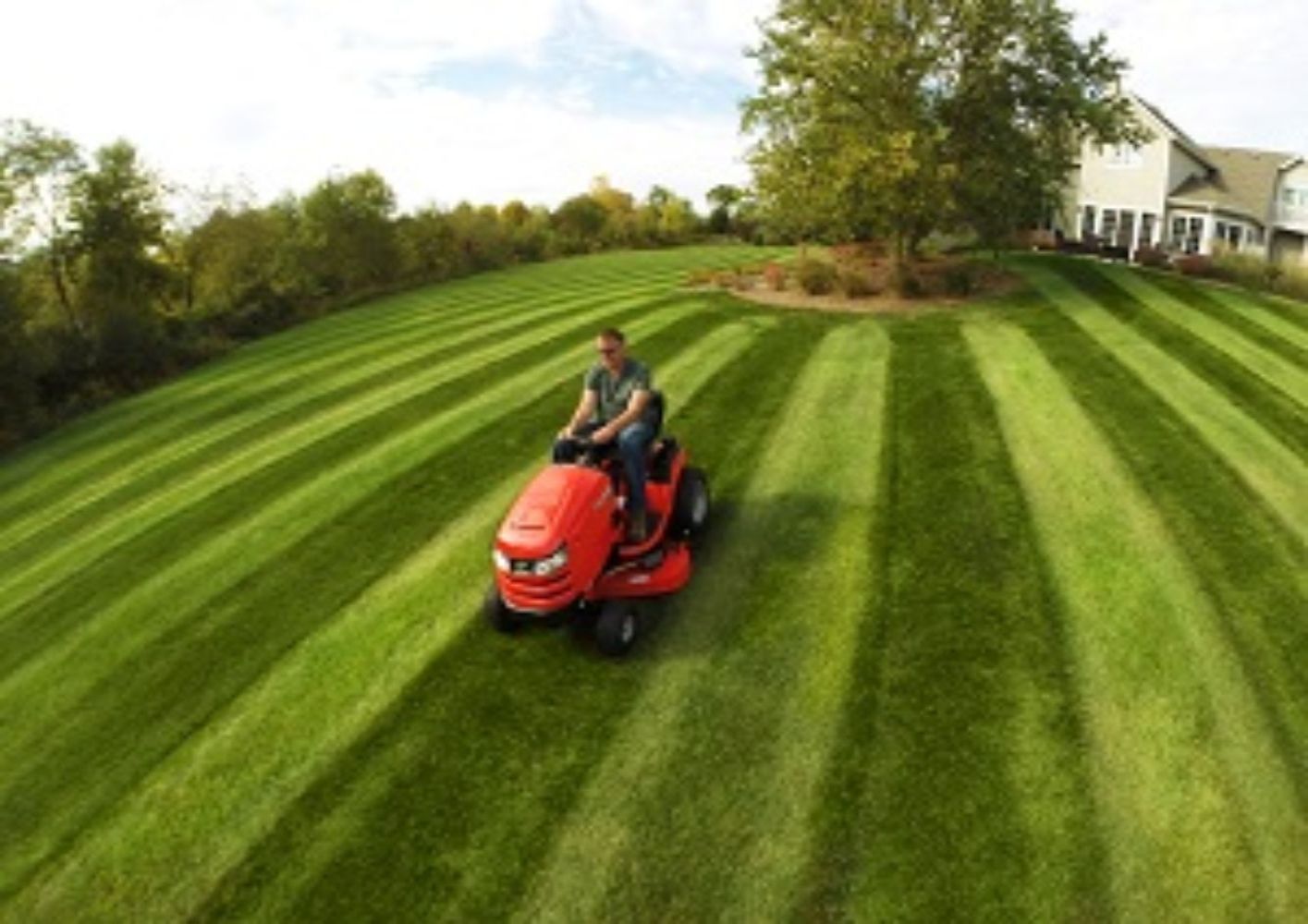The Mechanics of Striping
The stripes you see on a well-manicured lawn or a baseball field are simply the effect of bent grass and the light that reflects off of the grass blades. The blades that are bent toward you appear dark, while the blades bent the opposite direction look lighter in contrast. You can see this effect with normal mowing, but creating patterns takes it to another level. To get the blades to bend and create dramatic stripes, you’ll need a striping kit for your mower, or a roller.
Pick a Pattern
Before diving right in, you’ll need to pick a pattern for your lawn. The possibilities are practically endless, but the most common patterns are stripes, diamonds, and checkerboards.
When Mowing
Unless you are creating a wavy type of pattern, be sure to mow in a straight line. It’s generally best to start parallel to sidewalk or your driveway. When you reach the end of your row, lift your mower deck as you turn then mow in the opposite direction of your previous row. If you are creating a checkerboard, mow your lawn a second time at 90 degrees to your first mowing. To finish, mow a strip around the edges of your lawn.
Further Striping Tips
The trick is to set your deck high. If you mow at the highest setting the result will be softer grass that bends more freely. If you cut your grass short, it will not be able to bend as far, and thus will not have as much of a dramatic stripe. Even raising the deck just a half-inch can make all the difference in the world. And finally, always mow with nicely sharpened blades for a professional, quality cut.
Bold Stripes
If you want wish for an even bolder look, be sure to purchase a roller, as mentioned before. Take the roller and follow the lines you mowed, rolling the grass in the same way you cut it. This will create your bold, professional look and you’ll see a dramatic difference.
NCI – Because there doesn’t have to be a difference between a ball park’s outfield and your front yard.



